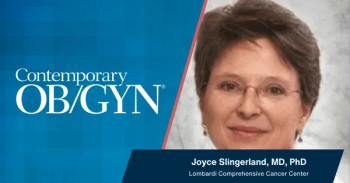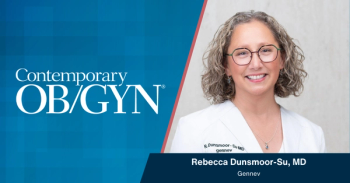
OCs for Perimenopausal Women: Who Might Benefit from the Pill?
Healthy, nonsmoking perimenopausal women can derive a host of benefits from using oral contraceptives (OCs). Along with providing effective contraception, OCs can regulate their menstrual cycles, reduce hot flashes, and protect against two gynecologic cancers.
Healthy, nonsmoking perimenopausal women can derive a host of benefits from using oral contraceptives (OCs). Along with providing effective contraception, OCs can regulate their menstrual cycles, reduce hot flashes, and protect against two gynecologic cancers. So why do only about 5% of women age 40 to 50 use OCs for contraception?
First, many clinicians worry that OC use in older reproductive-aged women increases the risk for serious health problems such as breast cancer, myocardial infarction (MI), and stroke, especially in the long run. Also, some believe that OC use leads to weight gain. However, clinical trial data published in the past decade suggest otherwise:
- It is well documented that long-term use of low-dose OCs does not significantly increase the risk for MI or stroke in healthy nonsmokers.1,2
- A huge reanalysis of more than 90% of published data on the subject found no significant relationship between OC use and long-term breast cancer
risk.3 - Concern about weight gain seems to be unfounded; recent study data showed that weight gain was identical in OC and placebo users.4
Second, many women and their clinicians are not aware of the noncontraceptive health benefits associated with OC use in perimenopausal women. These include a reduced risk for ovarian and endometrial cancers, fewer fibrocystic breast changes, and reduced rates of bone density loss and fracture.5 For example, a case–control study showed that women in their 40s who used OCs had a significantly lower risk for postmenopausal hip fractures than did women who had never used OCs.6
OCs can also provide relief for two common menopause-related symptoms-hot flashes and menstrual period disorders. One study showed that OC use significantly reduced the number and severity of hot flashes in perimenopausal women.7 (OC users who experience hot flashes during the placebo week can try adding low-dose supplemental estrogen-oral or transdermal-during this time. Another option is to take active OC tablets continuously, avoiding any placebo days.) Three studies, which included perimenopausal participants, demonstrated that OCs controlled anovulatory bleeding, primary dysmenorrhea, or menorrhagia in women with benign menstrual bleeding disorders.8–10 In terms of cycle control, one study showed that breakthrough bleeding occurred less frequently with OC formulations containing 30 to 35 &g of estrogen than with those containing 20 &g of estrogen.11
Women should understand that OC use does not offer them protection against sexually transmitted diseases (STDs). Thus, sexually active perimenopausal women at risk for STDs should observe safe-sex practices. Also, OC use suppresses the normal follicle-stimulating hormone (FSH) rise that accompanies menopause. Therefore, FSH testing cannot be used to confirm menopause in OC users.
Contraindications to OC use include a history of thrombophlebitis or thromboembolic disorders; cerebral vascular or coronary artery disease; known or suspected breast, endometrial, or other estrogen-dependent cancer; undiagnosed abnormal uterine bleeding; jaundice during a previous pregnancy or OC use; hepatic adenomas or cancer; and known or suspected pregnancy. OC labeling also contains a warning that cigarette smoking increases the risk for serious cardiovascular side effects (especially MI and stroke) from OC use. This risk, documented in earlier studies with OCs containing higher doses of estrogen, was found to increase with age and with heavy smoking (_15 cigarettes/d), and was quite marked in women older than 35. Because of this health risk, current recommendations are that women older than 35 who smoke should not use combination OCs. Side effects of OCs include nausea, breast tenderness, and spotting between periods.
The “mini-pill,” which contains progestin only (e.g., Nor QD®, Micronor®) may be a better choice for women in whom contraceptive doses of estrogen are contraindicated. Compared with combination OCs, progestin-only OCs are slightly less effective in preventing pregnancy and may not offer the same noncontraceptive health benefits.
Based on the evidence, OCs offer a safe, appropriate option for healthy, nonsmoking perimenopausal women who wish to practice birth control and/or have symptoms such as hot flashes or irregular bleeding. Once women using OCs reach their mid-50s, when the likelihood of ovulation is remote, contraceptive doses of estrogen and progestin needed to suppress ovulation are no longer necessary; these women can make the transition to conventional doses used for hormone replacement therapy. Readers are referred to Lila E. Nachtigall’s article, “Making the Switch from OCs to HRT,” in the August 2000 issue of THE FEMALE PATIENT® for more information on this topic.
References:
REFERENCES
1. Sidney S, Siscovick DS, Petitti DB, et al. Myocardial infarction and use of low-dose oral contraceptives: a pooled analysis of 2 US studies. Circulation. 1998;98: 1058â1063.
2. Schwartz SM, Petitti DB, Siscovick DS, et al. Stroke and use of low-dose oral contraceptives in young women: a pooled analysis of two US studies. Stroke. 1998; 29:2277â2284.
3. Collaborative Group on Hormonal Factors in Breast Cancer. Breast cancer and hormonal contraceptives: collaborative reanalysis of individual data on 53,297 women with breast cancer and 100,239 women without breast cancer from 54 epidemiological studies. Lancet. 1996;347: 1713â1727.
4. Redmond G, Godwin AJ, Olson W, Lippman JS. Use of placebo controls in an oral contraceptive trial: methodological issues and adverse event incidence. Contraception. 1999;60:81â85.
5. Kaunitz AM. Beyond birth control: safety and health benefits of oral contraceptives. The Female Patient. 1999;4:61â69.
6. Michaelsson K, Baron JA, Farahmand BY, et al. Oral-contraceptive use and risk of hip fracture: a caseâcontrol study. Lancet. 1999;353:1481â1484.
7. Casper RF, Dodin S, Reid RL, et al. The effect of 20 &g ethinyl estradiol/1 mg norethindrone acetate (Minestrin), a low-dose oral contraceptive, on vaginal bleeding patterns, hot flashes, and quality of life in symptomatic perimenopausal women. Menopause. 1997;4:139â147.
8. Davis A, Lippman J, Godwin A, et al. Triphasic norgestimate/ethinyl estradiol oral contraceptive for the treatment of dysfunctional uterine bleeding. Obstet Gynecol. 2000;95:S84.
9. Milsom I, Sundell G, Andersch B. The influence of different combined oral contraceptives on the prevalence and severity of dysmenorrhea. Contraception. 1990;42: 497â506.
10. Larsson G, Milsom I, Lindstedt G, Rybo G. The influence of a low-dose contraceptive on menstrual blood loss and iron status. Contraception. 1992;46:327â334.
11. Sulak P, Lippman J, Siu C, et al. Clinical comparison of triphasic norgestimate/35 micrograms ethinyl estradiol and monophasic norethindrone acetate/20 micrograms ethinyl estradiol: cycle control, lipid effects, and user satisfaction. Contraception. 1999;59:161â166.
Andrew M. Kaunitz, MD, is Professor and Assistant Chairman, Department of Obstetrics and Gynecology, University of Florida Health Science Center, Jacksonville, FL. He is a former member of the Professional Education Committee of The North American Menopause Society, and he now serves on the Advisory Board of THE FEMALE PATIENT.
About NAMS
Founded in 1989, The North American Menopause Society (NAMS) is the leading nonprofit organization dedicated to promoting understanding of menopause and thereby improving the health of women as they approach menopause and beyond. Its multidisciplinary membership of 2000 leaders in the field-including clinical and basic-science experts from medicine, nursing, sociology, psychology, nutrition, anthropology, epidemiology, and education-allows NAMS to be the pre-eminent resource on all aspects of menopause for both health care providers and the public.
NAMS contact information is as follows: Address: PO Box 94527, Cleveland, OH 44101; telephone: (440) 442-7550; fax: (440) 442-2660; e-mail:
Originally published in The Female Patient -- November, 2000
© Copyright, 2000 Quadrant Publishing, All Rights Reserved. Reprints are not allowed without the expressed written consent of Quadrant Publishing.
Newsletter
Get the latest clinical updates, case studies, and expert commentary in obstetric and gynecologic care. Sign up now to stay informed.










